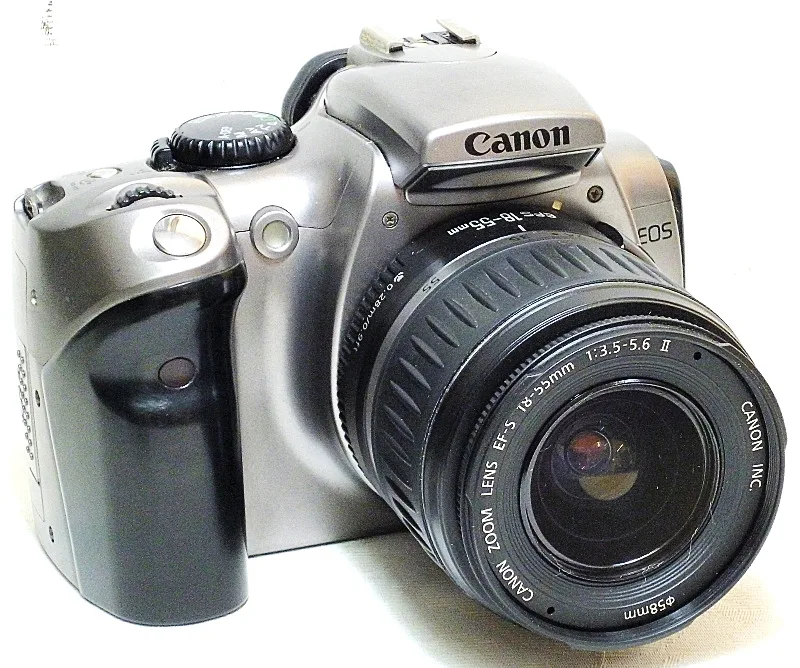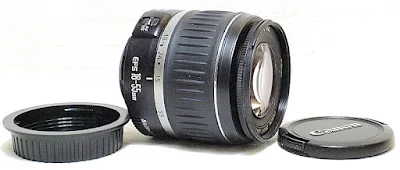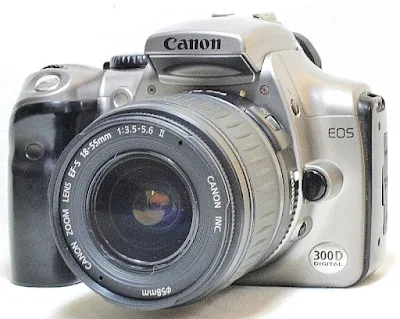Photo enthusiasts do tend to set aside kit lenses that normally come with camera kits as these lenses are deemed a cheap low-cost version of better-grade lenses. There is no reason, really, as to why you want to do such, as a few of these lenses are good performers and are worth a second look. The lenses that are let off are often listed at the low end of the cost spectrum and are readily available used on the auction market, or in brick-and-mortar stores, for others to choose from.
I had the opportunity recently to acquire and test the Canon EF-S 18-55mm 1:3.5~5.6 II, an all-plastic lens, which was made available only as part of a Canon DSLR kit (the Canon EF-S 18-55 mm 1:3.5~F5.6 was the kit lens for the Canon EOS 300D). The lens is all plastic, except for the lens elements, even has a plastic mount, a super lightweight at 190 grams, measures 69mm x 66.2mm, has no distance indication scale, and has only a barely usable focusing ring located on the end of the extending objective end.
The lens, seemingly, is not meant for serious manual focusing either, as the object end of the inner barrel wobbles when the focusing ring is used manually. In autofocus mode, the lens is powered by a micromotor drive which is quite audible in use. Zooming is convenient with its ample zoom ring. For storing and carrying around, the lens is most compact at around 35mm and extends to maximum length at either end of the focal length range.
I am sure that there was some good with this lens, as it has been developed and improved over nine iterations, including the USM, I, II USM, II, IS, IS II, III, IS STM, and the 1:4~5.6 IS STM. The latest update, in 2017, saw the new 1:4~5.6 IS STM with a smaller aperture and a 20% reduction in size.
For the duration of this review, the Canon EF-S 18-55mm 1:3.5-5.6 II was mounted and images were taken on a Canon EOS 300D. As a non-technical person, I will definitely shy away from the nuances of color fringing, aberrations, or whatever terms reviewers use to describe the performance of a lens or lenses, and just stick to the fun of trying out the imagery from a vintage lens mounted on an equally vintage digital SLR camera.
Initial Shots
These initial shots are my standard 'look across over to the ensemble on the dining table' and a section of the clutter on my work table. Nice colors!
Walking The Zoom
Looking at the zoom range of the Canon EF-S 18-55mm 1:3.5~5.6 II, with images shot from the widest to the shortest end zoom range of the lens, @ 18, 24, 35, and 55mm. Interesting take!
Square Cuts
Square cuts from the garden, a couple of close-ups, and shots against the morning sun.
The Canon EOS 300D
The Canon EOS 300D (EOS Digital Rebel in North America, EOS Digital Kiss in Japan), the first user-grade entry-level DSLR introduced by Canon in 2003, comes with a 6.3MP APS-C sensor, 7-point wide-area autofocus (AF) system, ISO sensitivity from 100 to 600, a shutter speed range from 30 - 1/4000 second, continuous shooting at approximately 2.5 frames, and a frame buffer for up to 4 shots.
Images are recorded in one of six JPEG formats available or as a 12-bit RAW file. The quality built plastic body is also complemented by the use of a pentamirror instead of a pentaprism as found on higher-grade models.





























No comments:
Post a Comment